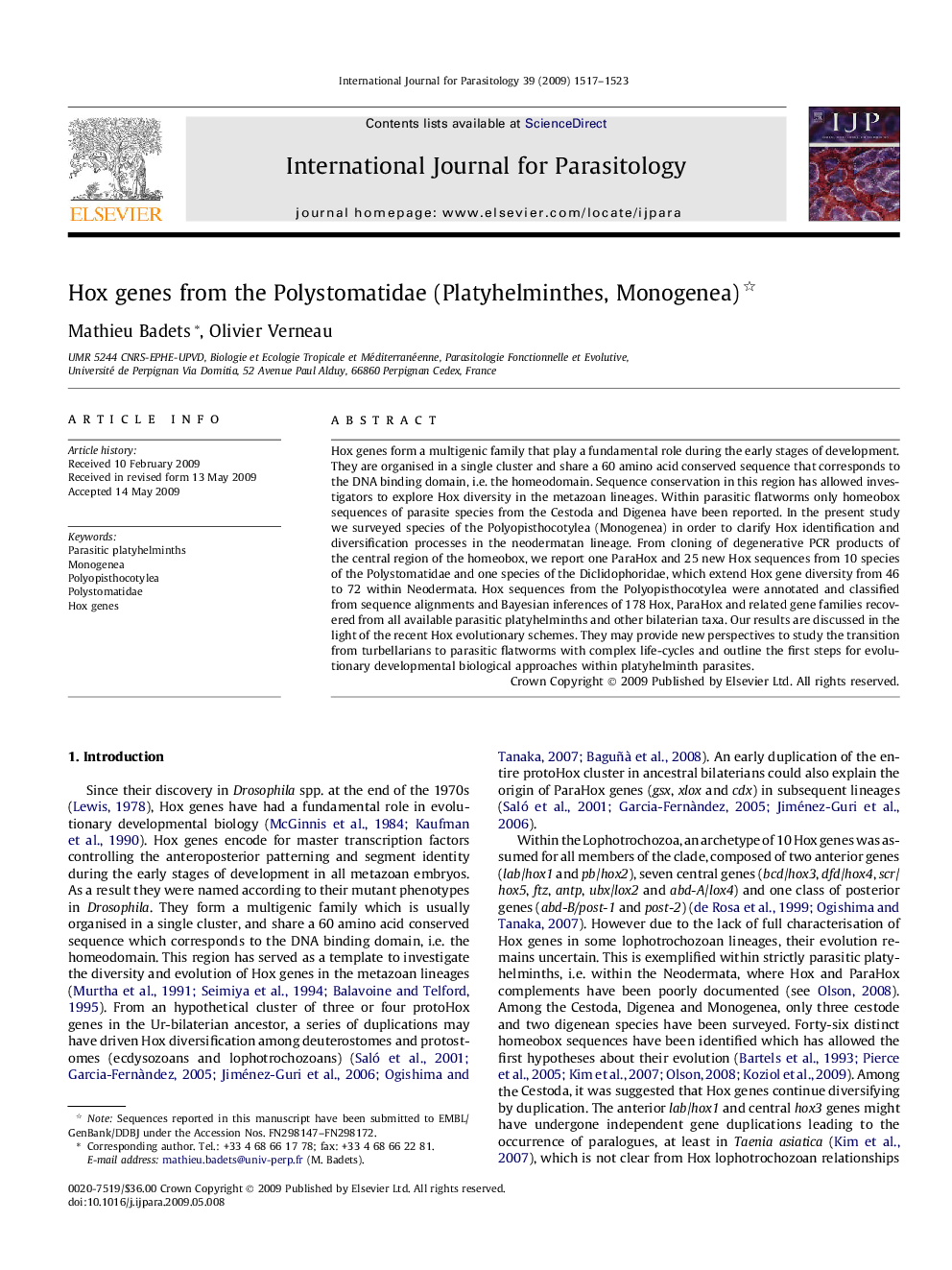| Article ID | Journal | Published Year | Pages | File Type |
|---|---|---|---|---|
| 2436740 | International Journal for Parasitology | 2009 | 7 Pages |
Hox genes form a multigenic family that play a fundamental role during the early stages of development. They are organised in a single cluster and share a 60 amino acid conserved sequence that corresponds to the DNA binding domain, i.e. the homeodomain. Sequence conservation in this region has allowed investigators to explore Hox diversity in the metazoan lineages. Within parasitic flatworms only homeobox sequences of parasite species from the Cestoda and Digenea have been reported. In the present study we surveyed species of the Polyopisthocotylea (Monogenea) in order to clarify Hox identification and diversification processes in the neodermatan lineage. From cloning of degenerative PCR products of the central region of the homeobox, we report one ParaHox and 25 new Hox sequences from 10 species of the Polystomatidae and one species of the Diclidophoridae, which extend Hox gene diversity from 46 to 72 within Neodermata. Hox sequences from the Polyopisthocotylea were annotated and classified from sequence alignments and Bayesian inferences of 178 Hox, ParaHox and related gene families recovered from all available parasitic platyhelminths and other bilaterian taxa. Our results are discussed in the light of the recent Hox evolutionary schemes. They may provide new perspectives to study the transition from turbellarians to parasitic flatworms with complex life-cycles and outline the first steps for evolutionary developmental biological approaches within platyhelminth parasites.
